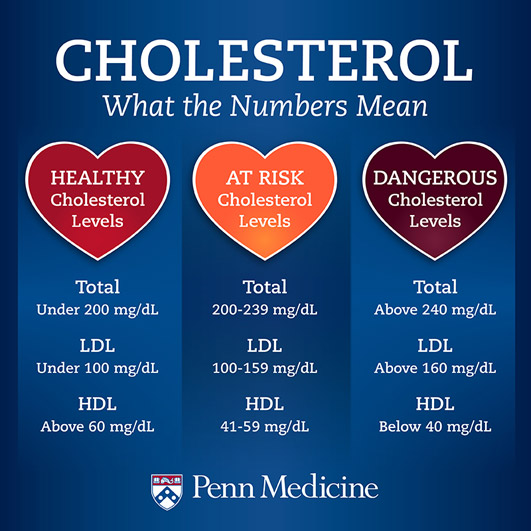Cholesterol is estimated in milligrams of cholesterol per deciliter of blood (mg/dL), and the body houses two kinds of cholesterol - "great" cholesterol (HDL) and "awful" cholesterol (LDL). HDL safeguards your heart by eliminating the LDL from your blood, subsequently forestalling LDL development in courses. HDL levels over 60 mg/dL are marks of a solid heart and are related with a lower risk for coronary illness.
What is a risky cholesterol level?
Too much cholesterol – good or bad – can be harmful to the heart. High blood cholesterol can lead to "hardening of the arteries" and over time cause blood flow to and from the heart to slow down or become blocked. A person is considered at high risk for developing heart disease if their total cholesterol level is higher than 240 mg/dL, LDL levels are higher than 160 mg/dL (190 mg/dL is even higher risk), and if the HDL level is below 40 mg/dL.
When you should see a doctor?
If your cholesterol level is dangerously high, you may be putting yourself at greater risk for developing heart disease and having a stroke. These risks are escalated for certain individuals based on other factors, such as diet and family history, so it is important for one to know how these factors affect your risk of developing heart disease.
Take our heart risk assessment now
If you or someone you know has high cholesterol levels, or has a family history of heart disease, encourage them to see a doctor to help protect their heart and to start making positive changes towards a healthier lifestyle.
Healthy ways to lower cholesterol
Achieving healthy cholesterol levels may seem tricky, but it is not impossible. The best way to reach these cholesterol goals is to make healthy lifestyle changes such as:
- Quitting smoking
- Eliminating fatty foods
- Becoming active and exercising daily (even for just 30 minutes)


